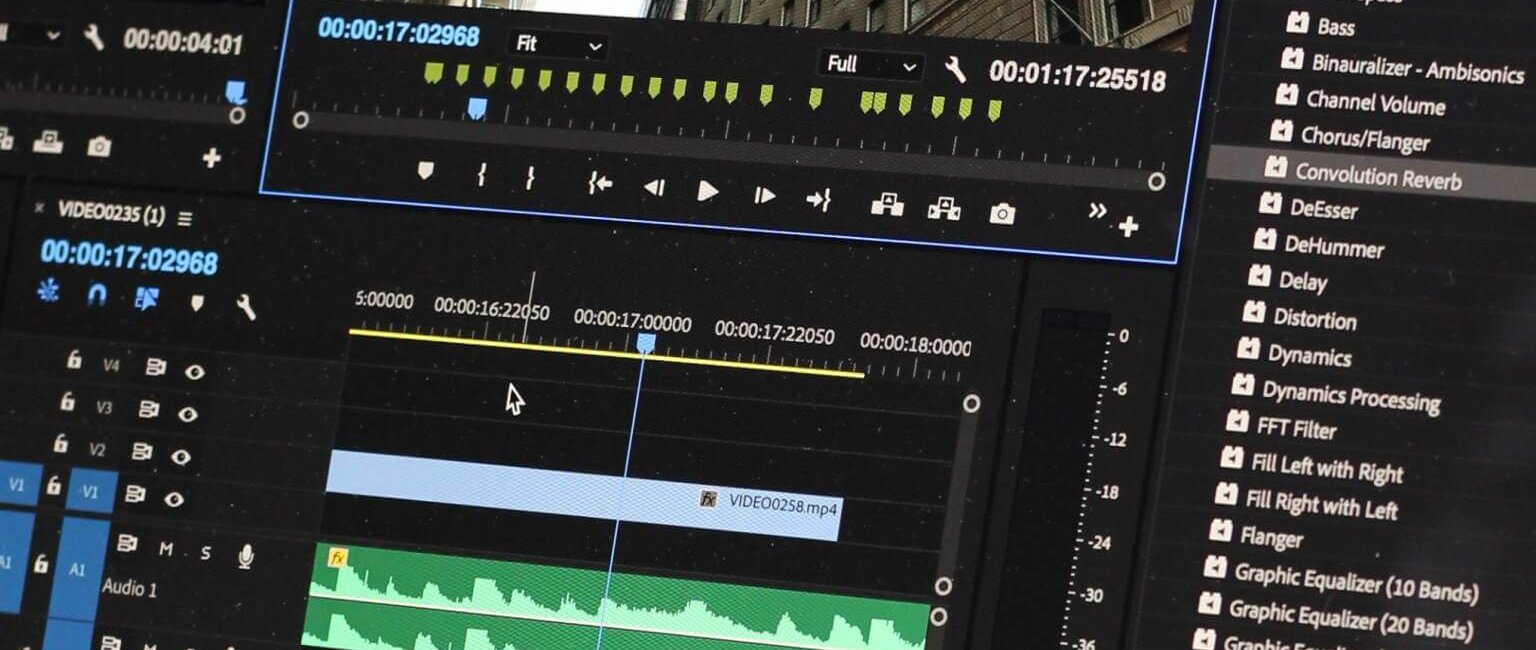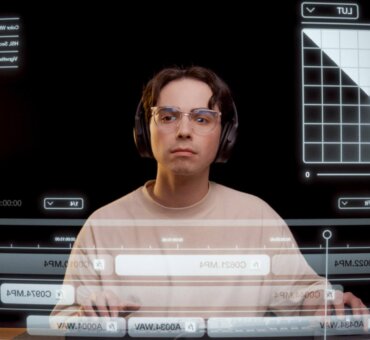If you’re just getting into the world of filmmaking and editing, you may well have come across the terms “J-cut” and “L-cut”. These are two very common cuts that appear in everything from simple YouTube videos to Hollywood blockbusters. Even if you don’t yet know what these are, we can guarantee you’ve watched countless examples of them throughout your life. So, what are they, why should you use them and (most importantly), how do you use them? Fortunately for you, we have all the answers right below. Read on to find out everything you need to know on the humble J-cut and L-cut.
What is a cut?
Firstly, before we get into our J’s and L’s, what is a cut in general? In simple terms, a cut is when in a film or video, one clip ends and another begins. For example, In Episode V of Star Wars we have the iconic shot of Darth Vader (spoiler alert) delivering the line “no, I am your father”, followed by the shot of a disbelieving Luke Skywalker. Here, the cut has occurred at the moment the first shot of Darth Vader ends and the second shot of Luke Skywalker begins. Anytime this happens in any film or video, you’re watching a cut.
What is an L-cut?
Editing is a complex, in-depth process and naturally there are all kinds of different ways to make a cut, including the J and L cuts. So, what is an L-cut? An L cut is when the audio from a preceding shot runs further on, under the succeeding shot and past the point where the two visual shots transition. In an edit, it will look something like this on your timeline. The way the audio continues to play from the first clip under the second gives you an “L shape” on the timeline, hence why we call it an L-cut.

What is a J-cut?
The J cut, as you may have guessed, is the opposite of an L cut. In this instance, the audio of the succeeding shot starts a little bit sooner under the preceding shot, before the visual cut has been made. In this case, you create a “J shape” on the timeline, hence why we call it the J-cut.

The history of the J-cut and L-cut
For as long as film and the editing of film has existed, so have cuts. It’s not clear exactly when J-cuts and L-cuts became a thing, but they’ve certainly been around for a very long time. Given that this is an editing technique specifically for audio, we know it came after the silent film era. In 1927 (almost 100 years ago!), “The Jazz Singer” was heralded as the first film that introduced audiences to fully synced sound with visuals.
Below, you can watch an L-cut example where you can see the actor Al Jolson famously exclaiming “you ain’t heard nothin’ yet!” (a great quote considering this was the first film with synced sound) before wheeling away to talk to his bandmates. While the audio of him talking continues, the visuals cut to the audience taking their seats. The very first L-cut, ladies and gentlemen.
Why use a J-cut or an L-cut?
Never mind J-cut Vs. L-cut – why do we cut at all? The answer is very simple. We cut our footage in an edit to keep it flowing and interesting. If the video or film doesn’t move at the right pace, our audience will become bored and we’ll lose their attention. Both the J-cut and the L-cut are very easy ways to keep your edits interesting and flowing.
When to use a J-cut and L-cut
Dialogue
One particularly useful way to use both a J-cut and an L-cut is during pieces of heavy dialogue between characters. Without these cuts, you can only focus on the character speaking in the moment, which can produce quite a cold, awkward edit. This effect of cutting back and forth is known as “ping pong”. In this classic Pulp Fiction scene below, there’s actually moments where the “ping pong” works quite well in conveying the awkwardness of Vincent and Mia getting to know each other.
However, when you introduce J-cuts and L-cuts to a dialogue-heavy scene, it often feels far more natural and gives you, the editor, much more to work with. Now, you can show the reactions of the person who is listening to the other speak, which is incredibly powerful in storytelling. For example, let’s go back to that classic piece between Darth Vader and Luke Skywalker. Here, we get to see Luke’s mortified reactions to what his father is telling him, while still hearing and feeling the iconic dark, angry tones of Darth Vader’s voice. The sequence feels like it’s knitted together a lot more tightly, compared to if it was a cold cut “ping pong” between the two.
A change of scene
Using a J-cut is a handy way of transitioning scenes in your film or video. For example, in Saving Private Ryan we see Spielberg expertly mixing in the sound of gunfire with rainfall. The gunfire and sounds of war subtly begin before we visually transition to the scene in which they’re taking place. It’s a way to introduce your audience to a new scene in the film, creating intrigue and suspense about what’s coming next.
Introduction
Similarly, at the start of your video and film, as a way “in” for your audience, you may want to introduce them to sounds first, before the visuals begin. A J-cut example here is the beginning of “Whiplash” (2014). We have 37 seconds of blank screen (apart from the title reveal) with nothing but a drum roll before our main character is finally revealed. It ratchets up the tension nicely and introduces key themes straight away – this is a tense film about music and drumming in particular.
Voiceovers and monologues
The other way a J-cut or L-cut could come in really useful is when you’re using voiceovers and monologues. This can come in many shapes and forms. Courtroom scenes are a particularly good L-cut example, where we get to hear one character giving evidence, testifying or defending, while also getting to examine the reactions of all the other characters in the room, helping to dictate the tone of the scene and guide us as viewers as to where the story is going. One particularly great example of this would be from the Better Call Saul finale.
WARNING. These are big spoilers so if you haven’t watched yet, you may want to avoid! In short, to see the subtle reactions on Kim Wexler’s face as Jimmy delivers his monologue shapes the whole scene and ending of this story. Without the L-cut, it wouldn’t be possible.
Sometimes, if a monologue is quite long and full of details, it can help to flesh this out by using a J-cut or L-cut to keep the audio running, while overlaying clips that flesh out the words and give the audience more visual details in relation to what is being said. A nice example of this can be found in “The Lord Of The Rings: The Return of The King” where Gandalf is telling Pippin about the various forces combining under Sauron. Being able to see and reference each faction he mentions adds to the terror and fear building throughout the scene. These are bad villains who are coming for our heroes.
It’s not just films
If you thought that the L-cut and J-cut were just for Hollywood, you’d be very wrong. This editing technique can (and is) used in just about anything. That means you can (and should) be using it in everything from social media videos on TikTok and YouTube to marketing and advertising videos.
If you hop on TikTok you’ll find a wealth of people using voiceovers to tell a story while overlaying footage that’s related to that story. It’s the same on YouTube, too. Check out this amazing series from YouTuber Martjin Doolard where he spends two years on a bike cycling from the very top of North America to the very south of South America. Throughout, we see plenty of J-cut and L-cut examples with Martjin narrating the stories from his table at home, while overlaying the footage from the trip.
Meanwhile, you’ll see a tonne of J-cut example and L-cut example footage in marketing videos. Check out this advert where the English Premier League football club Liverpool announced their partnership with Nike.
When to avoid the J-cut and L-cut
Ultimately, it’s up to you which editing technique you use and when. While the J-cut and L-cut are very useful, simple little cuts, we’d advise not to overuse them. As a rule of thumb, you probably want to use them only for the above scenarios we’ve highlighted. If you use too many, the edit might feel a little “strange” – as if each clip and scene is all bleeding into each other. Sometimes, as we see in Tarantino’s “Pulp Fiction” scene above, cold, hard cuts are also necessary.
Wrapping up
In summary, you should embrace J-cut and L-cut in your edits for a stronger impact on the viewer. With this simple editing technique, you can really change the flow and pace of your edit, giving you more flexibility and options in the storytelling process. Now that you know what these cuts are and how to use them, it’s time to start seeing them in your films!






